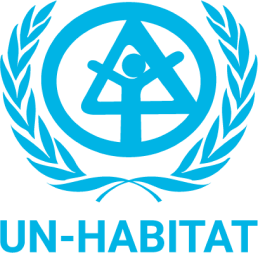10 September 2020, New Delhi – UN-Habitat and partners recently held a webinar to address how the planning and building of cities define the quality of life of their residents including living spaces, transport, clean air and water, access to food, education, health care and employment.
The ongoing COVID-19 pandemic presents cities in India with huge challenges including contact tracing in slums, proper waste management, proximity to essential services in smaller cities and the inadequate water, sanitation and hygiene situation.
The webinar was conducted on 26 August 2020 with the theme ‘Integrating Health in Urban Planning’, by the India’s Ministry of Housing and Urban Affairs (MoHUA), the Smart Cities Mission of India; National Institute of Urban Affairs (NIUA) in partnership with World Health Organization (WHO) and UN-Habitat. The webinar introduced the recently launched sourcebook, “Integrating Health in Urban and Territorial Planning” developed jointly by UN-Habitat and WHO.
Over 100 participants attended the webinar from all over India. The participants included Municipal Commissioners, CEOs, Managing Directors of Smart Cities, State Pollution Control Board Officials, State and District Health officials, Data / Technology Officers, Project Management Consultants (Team leaders and ICT experts), Master System Integrators, researchers, data enthusiasts and officials from city and state urban departments.
“What is a smart city if it does not address health, if you are not healthy, why are you making smart cities?” questioned Kunal Kumar, Joint Secretary and Mission Director, Smart Cities, MoHUA in his opening remarks.

Dr. Marcus Grant, lead author of the sourcebook underscored the need to improve health equity at the community level while recommending the contextualization of an asset-based and people-centric approach to this integrated form of planning.
Dr. Nathalie Roebbel, Coordinator, Air Pollution and Urban Health, WHO Geneva, explained that the sourcebook is a starting point towards the larger vision of implementing the New Urban Agenda. She shared an example of how the WHO had applied this concept to develop housing and health guidelines, taking into consideration the policies and standards that needed to be put in place to make the housing stock equitable and healthier to live in.
Herman Pienaar, lead of the Urban Lab, Planning, Finance and Economy Section at UN-Habitat said COVID-19 had been a massive stress test on the urban environment and a strong reminder of the gaps in the functioning of existing urban systems. He stated that for better success in blending health in urban planning, investments needed to be prioritized towards areas such as public open spaces that are currently labeled as ‘soft issues’, but in reality, contribute positively to the cumulative physical and mental wellbeing of citizens, and in long term, resilience and equitability in cities.
D. Thara, Joint Secretary of Atal Mission for Rejuvenation and Urban Transformation (AMRUT), MoHUA, highlighted that apart from a few selected cities like Chandigarh and Gandhinagar, growth patterns of cities in India have primarily been organic, where the population settles first and then is provided with the basic facilities by governing institutions in a ‘fire-fighting’ manner, catering to the areas which are in the most dire need of an intervention.
She added that MoHUA is taking steps to implement GIS-based master planning in 500 Indian cities. From these, the 90 cities that have already completed the process represent 60-70% of the total urbanized areas in India.
Jyoti Rawat, Joint Commissioner, National Urban Health Mission shared the actions taken by the Government of India to reduce the infection of COVID-19 in urban areas and increase the health services delivery to the people during the lockdown.
A pre-webinar survey found that 70 per cent of the participants thought that health professionals can efficiently contribute to urban and territorial planning by providing data and technical assistance on health statistics and demographics. In addition, 55 per cent of the participants mentioned that the biggest challenges to integrating health in urban and territorial planning are a lack of institutional capacity to foster intersectoral collaboration and the absence of an enabling policy environment to integrate public health targets in the planning sector.
Learn more about integrating health in urban and territorial planning.


